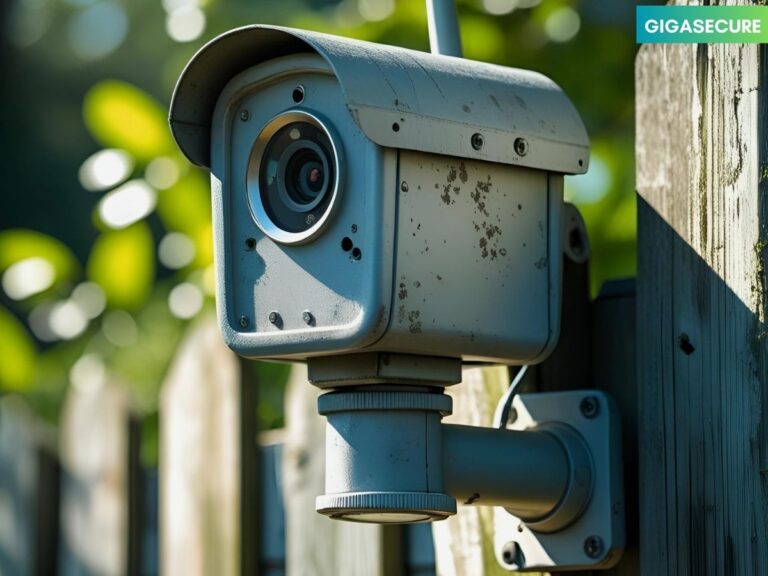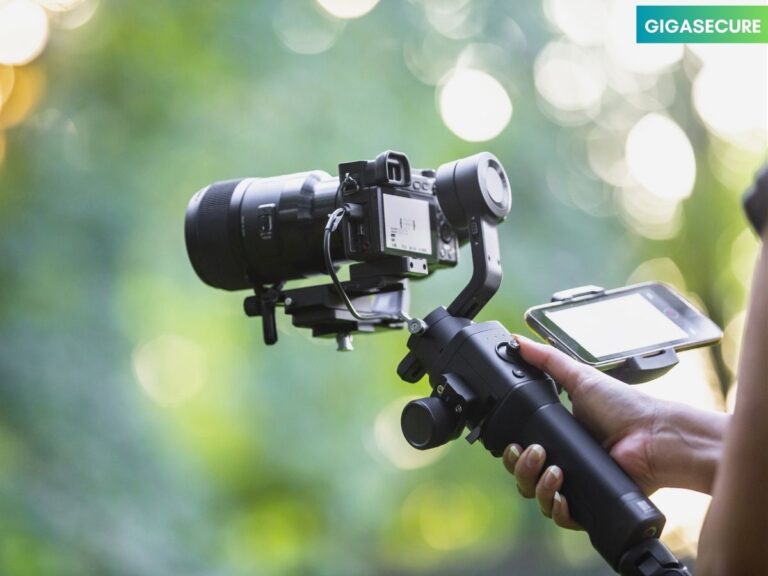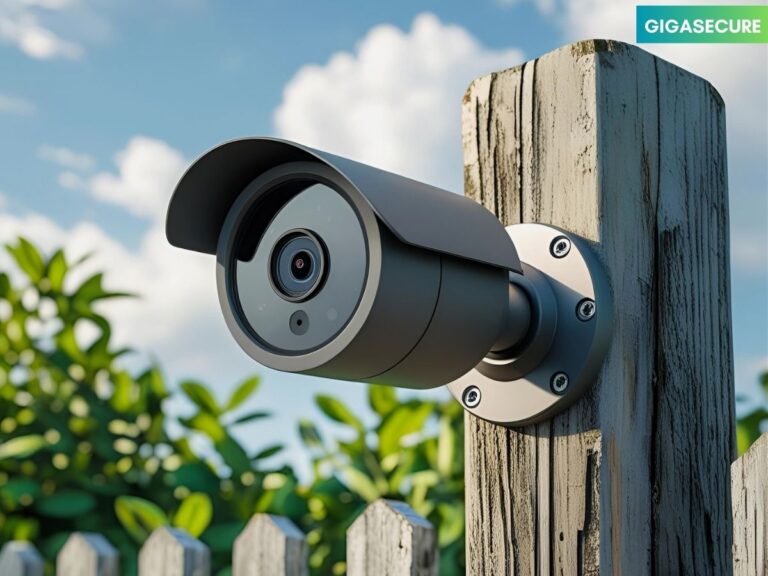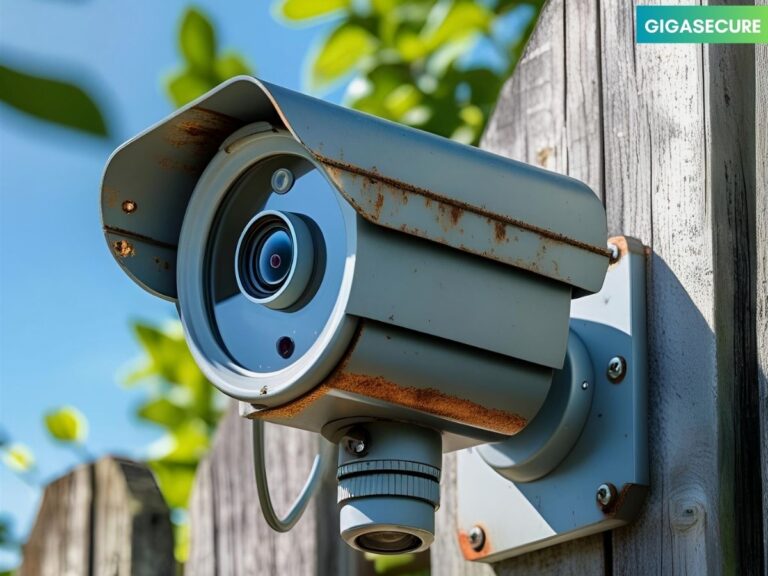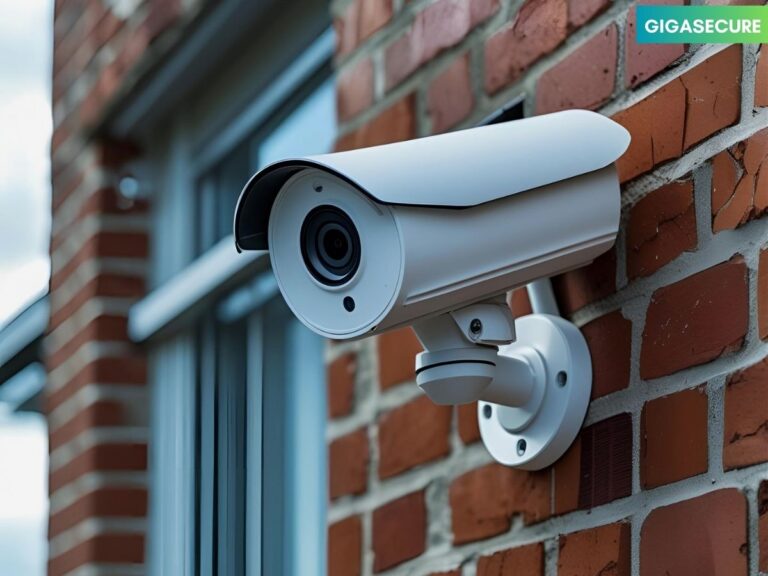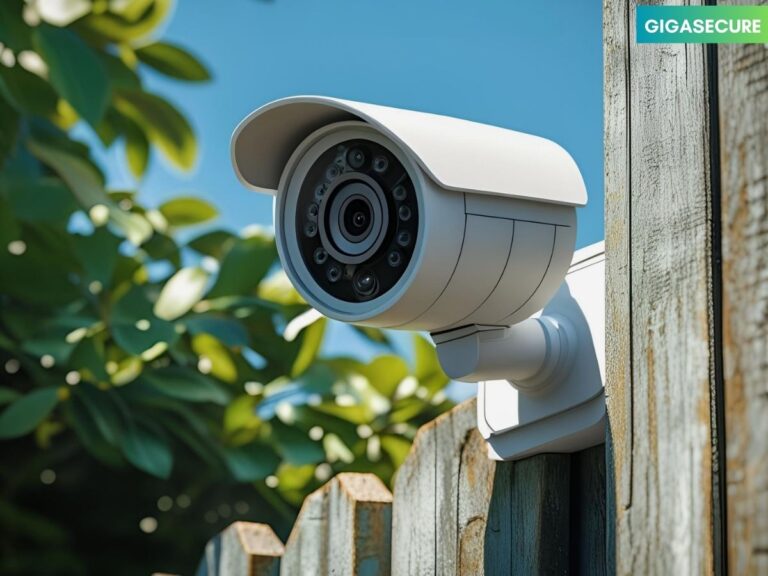PoE for Outdoor Cameras: Worth It or Not?
When I think about boosting my home’s security, installing outdoor cameras is a top choice. But, figuring out how to power them is a big challenge. That’s where Power over Ethernet (PoE) comes in. It makes things easier by sending both data and power through one Ethernet cable.
PoE is great for outdoor cameras because it cuts down on mess. It means no extra power cables, making setup simpler. In this article, we’ll look closer at PoE and if it’s a good choice for your outdoor cameras.
Key Takeaways
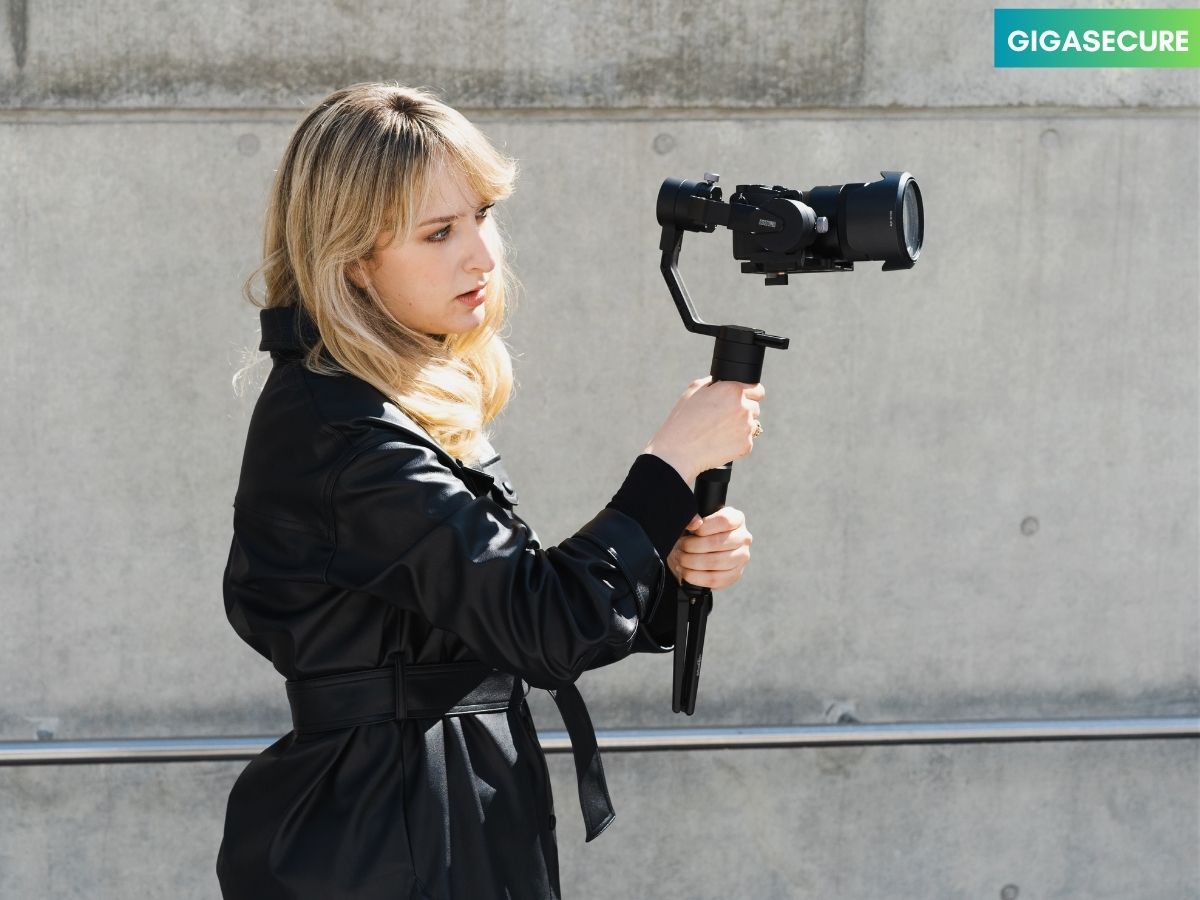
Understanding Power over Ethernet (PoE) Technology

PoE technology lets you send power and data over one Ethernet cable. This makes setting up network devices, like security cameras, easier.
The Basic Concept of PoE Explained
Power over Ethernet, or PoE, lets network cables carry both power and data. This means you don’t need extra power cables. It’s great for outdoor cameras where power outlets are scarce.
The idea is simple. Power is added to the Ethernet cable along with data. This way, devices like PoE outdoor cameras get power and connectivity through one connection.

How PoE Works in Security Camera Systems
In security camera systems, PoE combines power and data transmission. Here’s how it works:
- A PoE-enabled switch or injector adds power to the Ethernet cable.
- The powered Ethernet cable connects to a PoE-compatible device, like an outdoor security camera.
- The camera gets power and sends data back through the same cable.
- This setup makes installation easier and cuts costs by reducing the need for extra power cables.
Using PoE in security camera systems has many benefits. It makes installation simpler, allows for centralized power management, and powers devices where outlets are not available. This makes PoE a great choice for outdoor surveillance.
The Evolution of PoE Standards and Capabilities
Power over Ethernet (PoE) technology has seen big changes over the years. It started as a simple way to power devices over Ethernet cables. Now, it meets the needs of today’s network systems.
From IEEE802.3af to 802.3bt: Power Delivery Improvements
The first IEEE802.3af standard could deliver up to 15.4 watts of power. Then, the IEEE802.3at standard raised this to 30 watts. The latest IEEE802.3bt standard can now give up to 90 watts. This growth has made PoE better at powering more complex devices.
Current PoE Standards and Their Power Capabilities
Today, PoE standards offer different power delivery options. Here’s a quick look at the main standards and what they can do:
| Standard | Max Power Delivery | Typical Applications |
|---|---|---|
| IEEE802.3af | 15.4 watts | Basic VoIP phones, wireless access points |
| IEEE802.3at | 30 watts | PTZ cameras, advanced VoIP phones |
| IEEE802.3bt | Up to 90 watts | High-power devices, outdoor lighting, large PTZ cameras |

What Is PoE and Is It Worth It for Outdoor Camera Setups?
As outdoor surveillance needs grow, understanding the value of PoE becomes key. Power over Ethernet (PoE) has changed how outdoor security cameras are installed and managed.
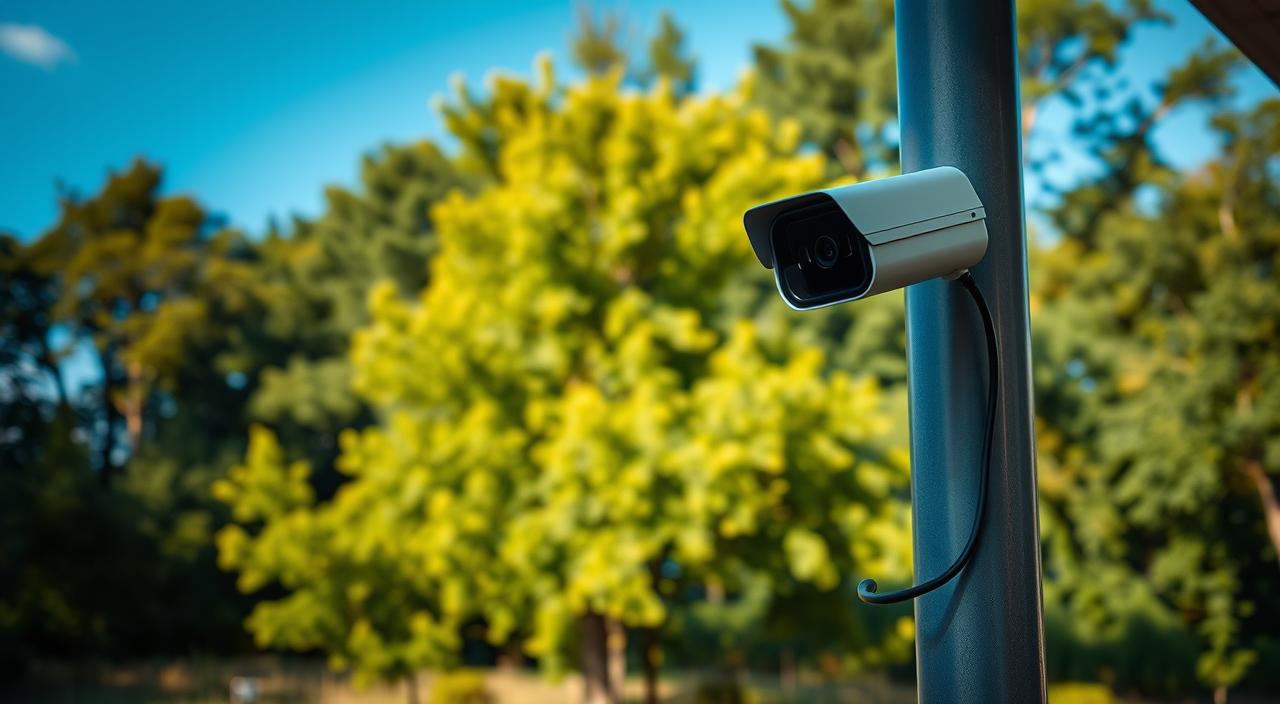
The Value Proposition of PoE for Outdoor Surveillance
PoE makes outdoor surveillance simpler and cheaper. It lets you power and connect data with just one cable. This means no need for extra power cables.
Key benefits include reduced installation complexity and lower labor costs. Also, PoE makes it easier to manage power from one place.
“PoE simplifies the installation process by reducing the number of cables required, making it an attractive option for outdoor surveillance systems.”
Cost-Benefit Analysis for Different Property Types
The cost-benefit of PoE for outdoor surveillance changes with property type. For big commercial places, PoE saves a lot on installation and upkeep.
- Residential properties: PoE makes the security system better with easier setup.
- Commercial properties: PoE cuts down on installation hassle and labor costs.
- Industrial properties: PoE ensures reliable power and data over long distances.
Thinking about these points helps property owners decide if PoE is a good choice for their outdoor cameras.
Key Advantages of PoE for Outdoor Security Cameras
Power over Ethernet (PoE) for outdoor security cameras brings many benefits. It makes surveillance systems more efficient and reliable.
Single Cable Installation Benefits
PoE lets you install data and power with just one cable. This makes setup easier and faster. It also cuts down on cabling and wiring mistakes.
A security expert says, “Using PoE can cut down installation time by up to 50% due to the reduced need for separate power cables.” This streamlined process can lead to significant cost savings, even for big outdoor camera setups.

Centralized Power Management and Backup
PoE makes it easy to manage power for all devices from one place. It also lets you use UPS for backup power. This keeps cameras running during power outages.
This feature is very important for keeping security systems running smoothly.
“Centralized power management through PoE not only enhances the reliability of security systems but also simplifies maintenance by allowing for remote monitoring and diagnostics.”
Security Industry Association
Reliability in Outdoor Environments
PoE systems are built to last, even in tough outdoor conditions. They use a single cable, which is less exposed to the weather. Modern PoE switches and injectors are also made for outdoor use, with weather-resistant designs.
This makes sure surveillance keeps going without a hitch in outdoor areas.
| Advantage | Description | Benefit |
|---|---|---|
| Single Cable Installation | Simplifies installation by combining data and power into one cable | Reduced installation time and cost |
| Centralized Power Management | Allows for easy monitoring and control of power supply | Enhanced reliability and simplified maintenance |
| Reliability in Outdoor Environments | Robust design withstands harsh weather conditions | Continuous surveillance in outdoor settings |
Potential Limitations and Challenges of PoE Systems
PoE technology has many benefits for outdoor surveillance. Yet, it faces challenges like distance limits and power budget issues. Knowing these can help us understand how they affect outdoor camera setups.
Distance Limitations and Solutions
The main issue with PoE systems is the distance between the power source and the camera. The IEEE 802.3af standard limits cable length to 100 meters (328 feet).
To solve this, you can use PoE extenders or repeaters to boost the signal. Or, consider fiber optic cables for longer distances without signal loss.

Power Budget Considerations for Multiple Cameras
When setting up multiple cameras, the power budget of your PoE switch or injector is key. Each camera needs a certain amount of power. If you go over the total power, your system might fail. To prevent this, calculate the total power needed for all cameras.
Make sure your PoE equipment can handle it. You might also use PoE switches with higher power budgets or spread the power across multiple switches.
By understanding these challenges and finding solutions, you can have a reliable PoE system for your outdoor cameras.
PoE vs. Traditional Power Methods for Outdoor Cameras
Outdoor security cameras are getting more common. It’s key to know the difference between PoE and traditional power methods. This will help you choose the right one for your outdoor surveillance.
Comparing Installation Complexity and Costs
Using PoE for outdoor cameras makes installation easier. It uses just one Ethernet cable for power and data.
This makes it simpler to place cameras in tricky spots. Traditional power methods need separate cables, which can make things more complicated and costly.
Installation Cost Comparison
| Installation Aspect | PoE | Traditional Power |
|---|---|---|
| Cable Requirements | Single Ethernet cable | Separate power and data cables |
| Labor Costs | Lower due to simpler installation | Higher due to additional cabling |
| Material Costs | Ethernet cables and PoE switch/injector | Power cables, data cables, and power supplies |
Reliability Comparison in Adverse Weather Conditions
Outdoor cameras face tough weather, which can affect their reliability. PoE systems might be better because they have fewer cables and connections. But, traditional power can also work well if installed and protected right.

Long-term Maintenance Differences
PoE systems are easier to maintain over time. They connect to a network, making it simpler to find and fix problems. Traditional power methods might need more effort to solve issues.
In summary, PoE and traditional power each have their own benefits and drawbacks for outdoor cameras. Knowing these differences helps you pick the best option for your surveillance needs.
Types of PoE Cameras for Outdoor Use
Choosing the right PoE cameras for outdoor use can be tough. There are many options, and knowing the different types is key. This knowledge helps set up an effective outdoor security system.
Fixed vs. PTZ PoE Camera Options
There are two main types of PoE cameras for outdoor use: fixed and PTZ (Pan-Tilt-Zoom) cameras. Fixed cameras are great for watching specific spots and are cheaper. PTZ cameras are more flexible, letting you move and zoom in on different areas. They’re perfect for bigger outdoor spaces.

Resolution and Feature Considerations
The camera’s resolution is very important for video quality. For outdoor security, look for cameras with high resolutions like 1080p or 4MP. Also, features like night vision, weather resistance, and wide dynamic range (WDR) are vital. They help capture clear footage in all lighting conditions.
Popular PoE Camera Models for Outdoor Installation
Some top PoE camera models for outdoor use are the Hikvision DS-2CE16C0T-IRP, Dahua IPC-HFW1230S, and Axis P1435-LE. These cameras have high-resolution video, night vision, and are weather-resistant. They’re great for many outdoor security needs.
Essential PoE Equipment for Outdoor Camera Systems
Setting up outdoor camera systems needs the right PoE equipment for a smooth installation. Power over Ethernet (PoE) makes it easy by sending power and data in one cable. This cuts down on the hassle and cost of old power wiring methods.
PoE Switches and Injectors Explained
PoE switches and injectors are key for outdoor camera systems. A PoE switch is a network switch that can power devices like security cameras over Ethernet cables. A PoE injector adds PoE to a non-PoE network switch, powering PoE devices.

Selecting the Right PoE Equipment for Your Needs
Choosing the right PoE equipment depends on several things. You need to think about how many cameras, their power needs, and your network setup. Make sure the PoE switch or injector can handle the total power needed for all devices.
| PoE Equipment | Features to Consider | Benefits |
|---|---|---|
| PoE Switch | Number of ports, Power per port, Total power budget | Simplified installation, Centralized power management |
| PoE Injector | Power output, Compatibility with existing network | Adds PoE capability to non-PoE switches, Cost-effective for small setups |
Knowing about different PoE equipment helps you build an outdoor camera system that works well and grows with your needs.
Step-by-Step Guide to Setting Up a PoE Outdoor Camera System
To make sure your outdoor camera system works well and lasts long, follow this guide. It will help you set up a PoE system.
Planning Your Camera Placement and Network Layout
Before you start, plan where to put your cameras and how your network will look. Think about the areas you want to watch and how much power each camera needs.
Find the best spots for your cameras. Think about what they can see, the light, and any blocks.
Key things to remember include:
- Camera resolution and what it can see
- Power over Ethernet (PoE) features
- How well they can handle the weather
Cable Selection and Installation Best Practices
Picking the right cables is key for your system’s success and life span. Look for cables that can handle the weather and are made for outside use.
Here are some tips for installing cables:
- Use shielded cables to cut down on interference
- Make sure cables are safe from damage
- Choose cables that can handle outdoor conditions

Connecting and Configuring Your PoE Equipment
After setting up your cameras and cables, it’s time to connect and set up your PoE gear. Start by linking your PoE switch to your network router.
| Equipment | Function | Considerations |
|---|---|---|
| PoE Switch | Provides power and network connection | Number of ports, power budget |
| PoE Injector | Adds PoE to non-PoE switches | Power output, compatibility |
| PoE Cameras | Records video, gets power over Ethernet | Resolution, weather resistance |
By following these steps and thinking about the important points, you can set up a PoE outdoor camera system that meets your security needs.
Troubleshooting Common PoE Outdoor Camera Issues
Keeping your PoE outdoor camera system working well means knowing how to solve common problems.
PoE makes installations easier and has many advantages for outdoor surveillance. But, knowing how to troubleshoot is key to keeping everything running smoothly.
Diagnosing Power and Connection Problems
If your PoE outdoor camera isn’t working, start by checking the power. Make sure the PoE switch or injector is working right. Also, check that the camera is getting power.
Look for any damage or wrong connections in the Ethernet cable. It’s also important to check the network setup. Make sure the camera is connected to the network correctly.

Solutions for Weather-Related PoE Failures
Weather can affect how well PoE outdoor camera systems work. To deal with weather issues, make sure all outdoor gear is sealed and protected. Use IP67-rated or higher cameras and housings to keep water out.
When you compare PoE vs traditional power supply, PoE systems usually do better in bad weather. This is because they have fewer outdoor power connections.
Regular upkeep, like cleaning camera lenses and updating firmware, can also help. Knowing how to handle these common problems can keep your PoE outdoor camera system in top shape.
FAQ Of PoE for Outdoor Cameras: Worth It or Not?
What is Power over Ethernet (PoE) and how does it work?
Power over Ethernet (PoE) lets network cables carry both data and power. This means you can power devices like security cameras with just one cable. It works by sending power through the Ethernet cable to a PoE-enabled device, making separate power cables unnecessary.
What are the benefits of using PoE for outdoor security cameras?
Using PoE for outdoor cameras makes installation easier and reduces cabling. It also offers a reliable power source. This reduces the chance of power outages and makes system management simpler.
How do I choose the right PoE switch for my outdoor camera system?
First, think about how many cameras you need to power and their power needs. Then, look at the total power the switch can handle. Make sure the switch fits your cameras and has enough ports.
Can I use PoE with non-PoE cameras?
Yes, you can power non-PoE cameras with PoE. You’ll need a PoE injector or splitter. An injector adds power to the cable, while a splitter separates power from data, allowing non-PoE cameras to work.
What are the distance limitations for PoE?
PoE usually works up to 100 meters (328 feet) per segment. But, some extenders and switches can go further. They help with longer cable runs.
How do I troubleshoot PoE issues with my outdoor camera system?
Start by checking the PoE switch and injector. Make sure the Ethernet cable is good and the camera is compatible. Also, check the power budget and distance to find problems.
Are there any weather-related considerations for PoE outdoor camera installations?
Yes, protect your PoE gear from extreme weather. Use weather-resistant enclosures and surge protectors. This keeps your equipment safe and working well.
Can I mix PoE and non-PoE devices on the same network?
Yes, you can have both PoE and non-PoE devices on one network. Just make sure your PoE setup is right. This avoids damaging non-PoE devices.
Conclusion: Is PoE the Right Choice for Your Outdoor Camera Setup?
PoE technology brings many benefits to outdoor security cameras. It makes installation easier, manages power centrally, and boosts reliability.
When looking at a PoE camera setup guide, consider both the pros and cons. These include distance limits and power budget needs.
For many, PoE’s advantages will be more important. This is true for large outdoor surveillance systems where setup and maintenance are key.
Whether PoE fits your needs depends on your specific situation. Knowing what PoE can and can’t do helps you choose wisely. This way, you can build a strong and reliable security camera system.

